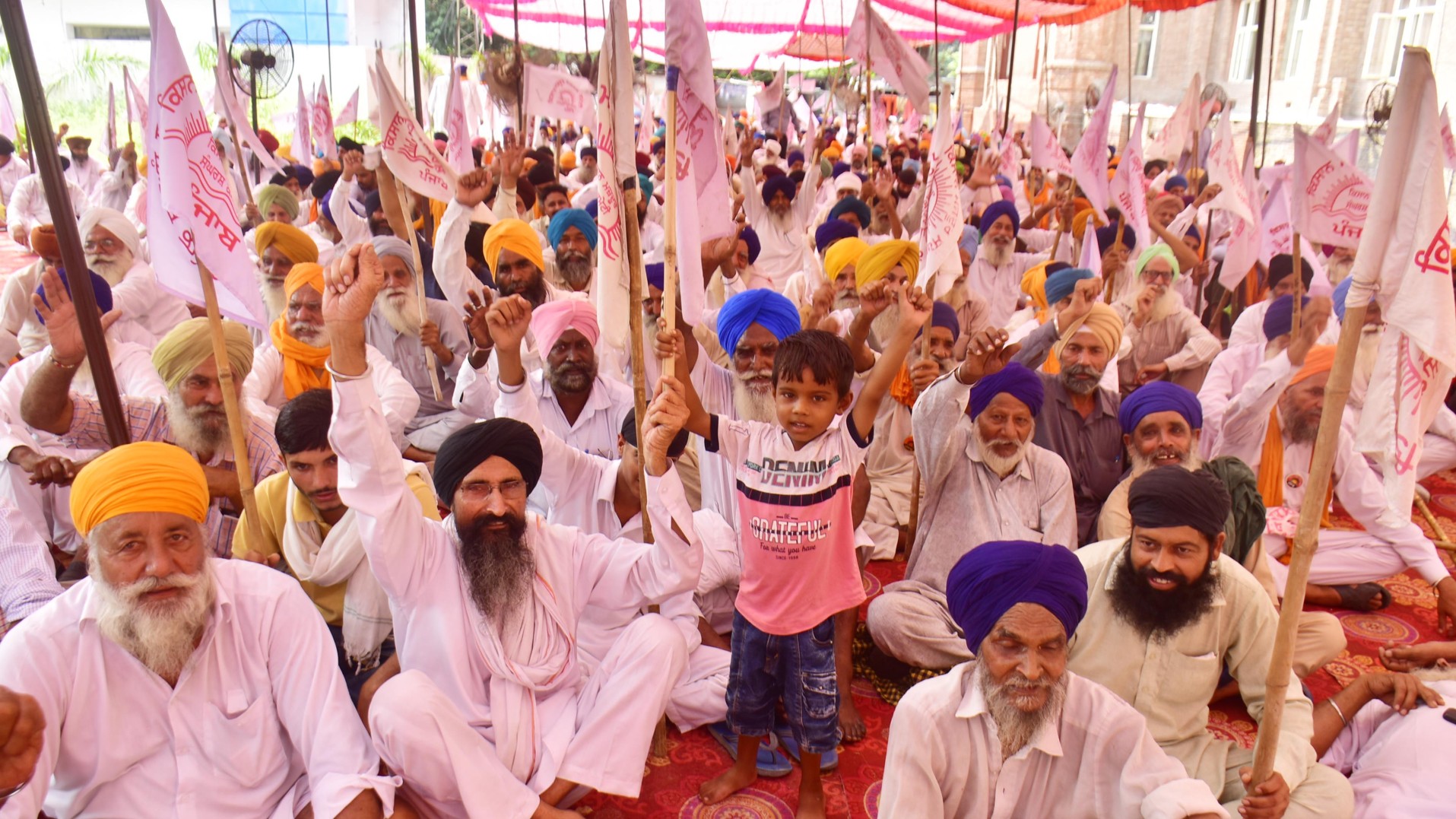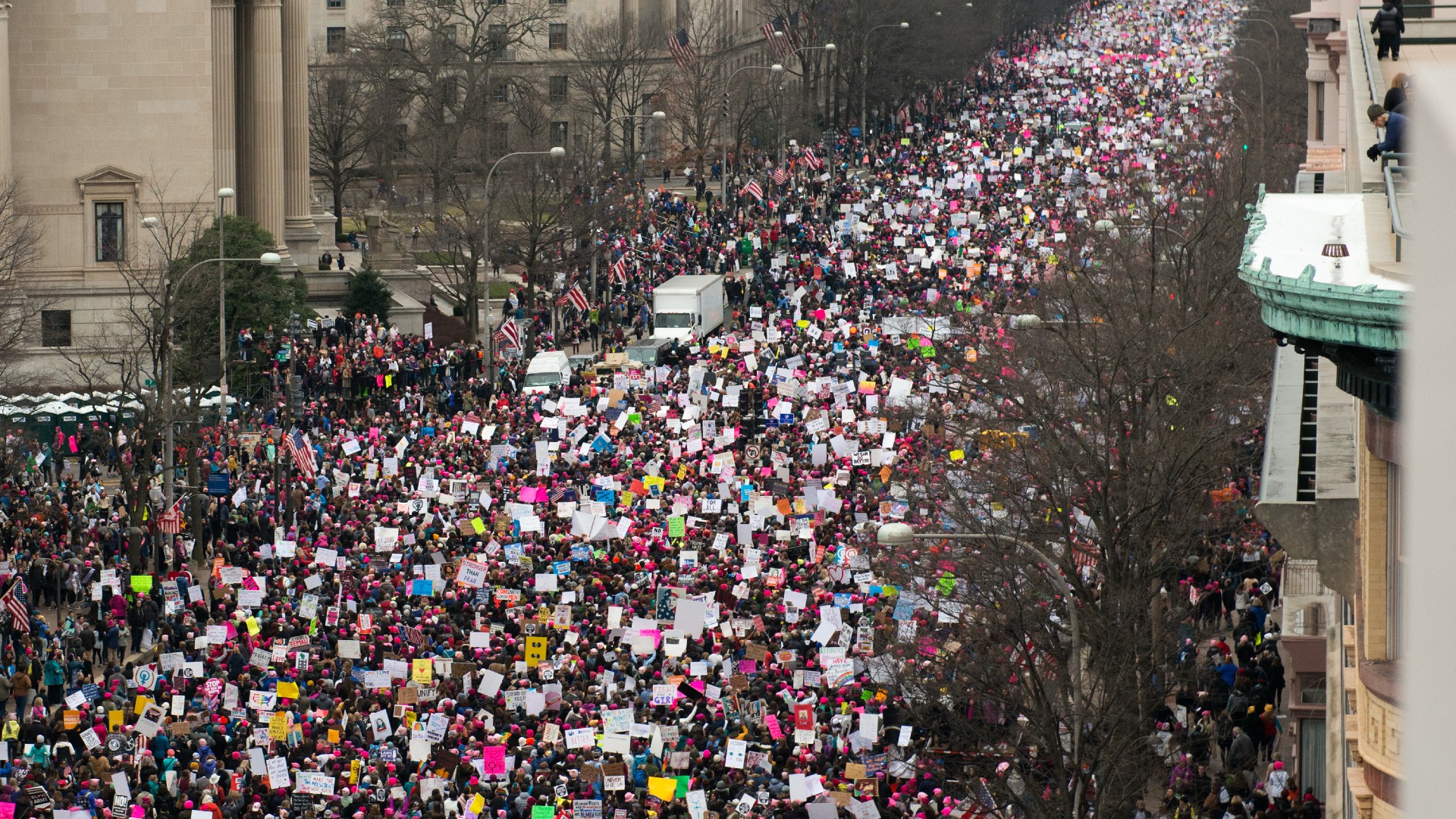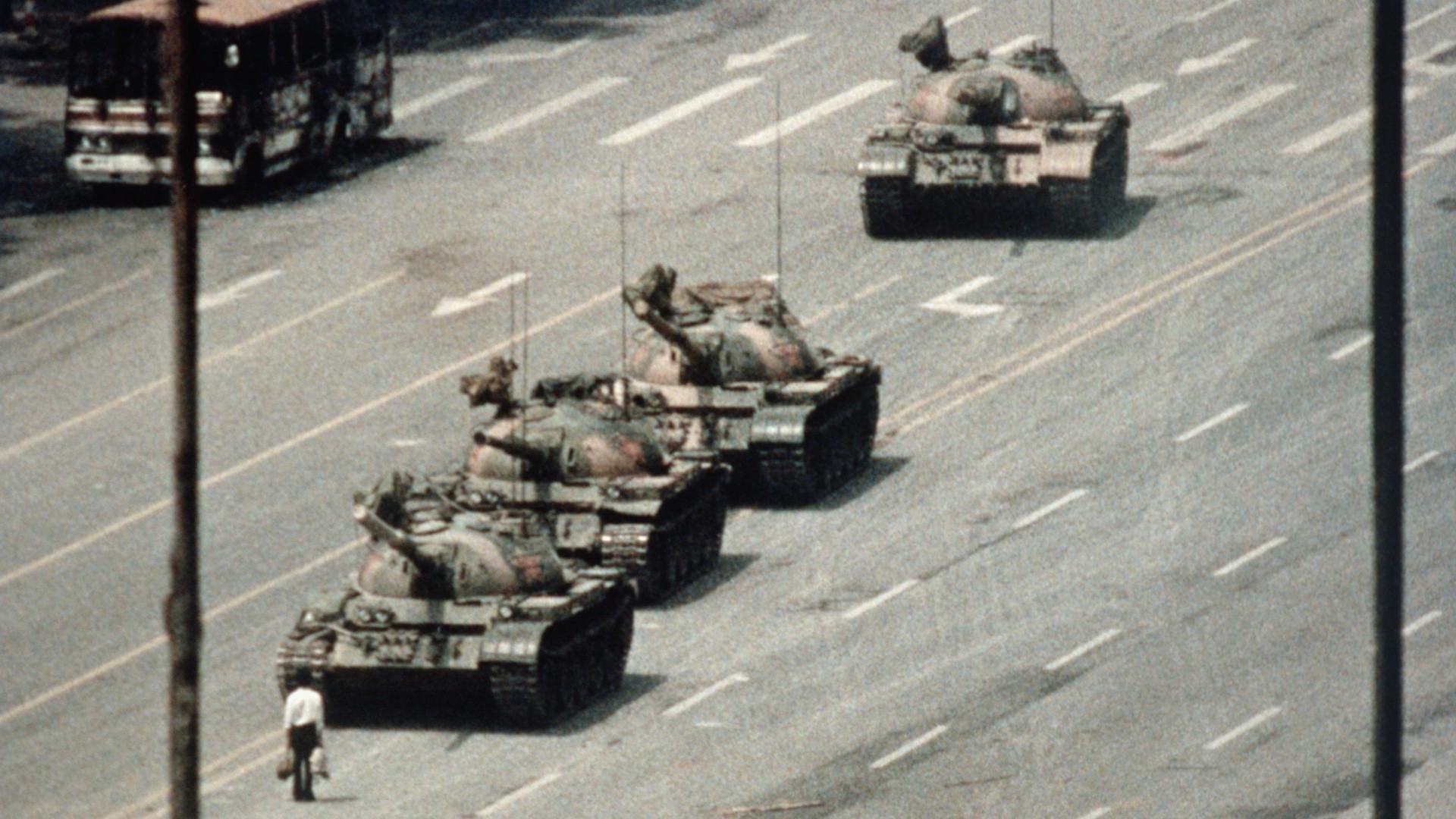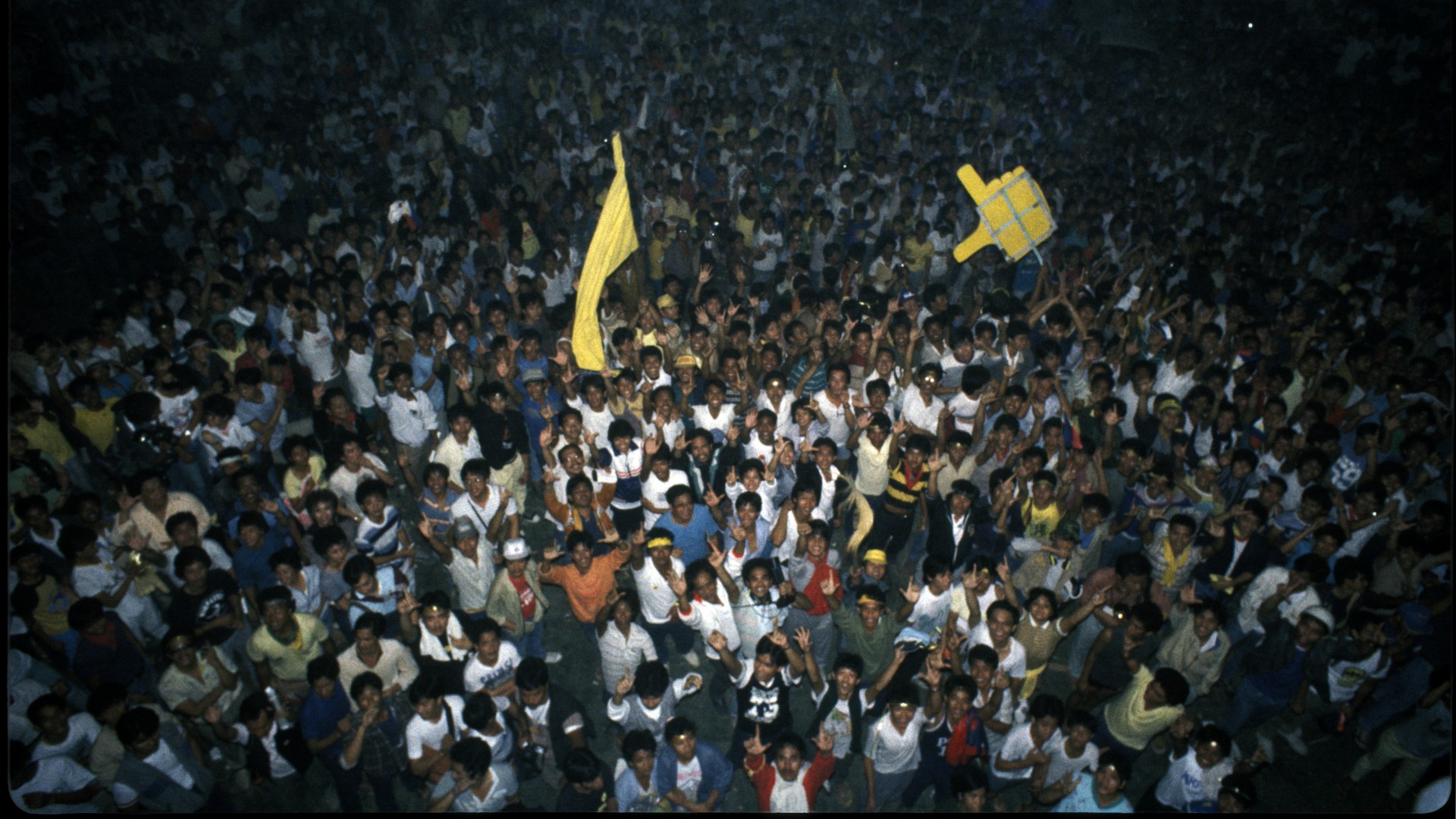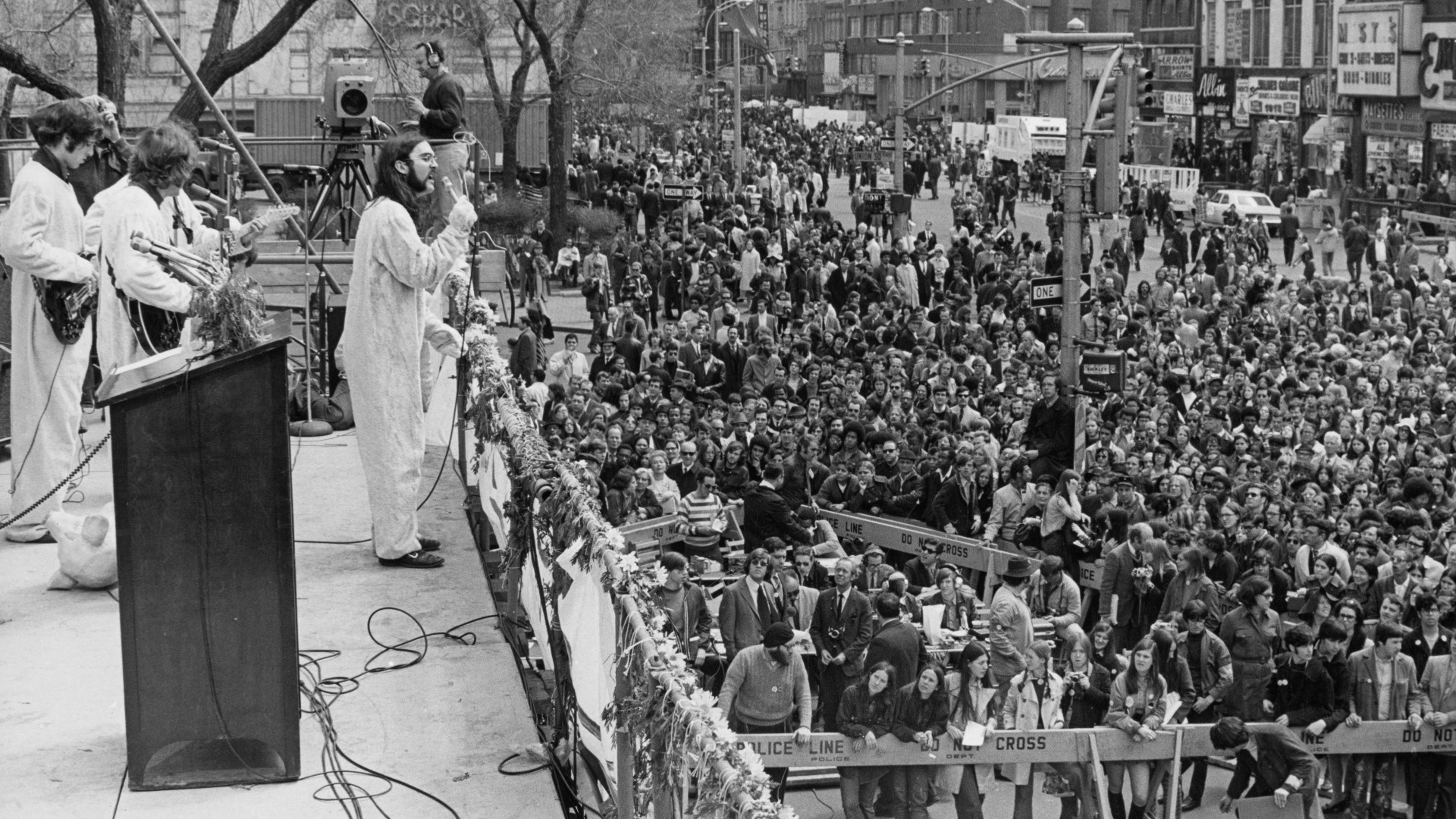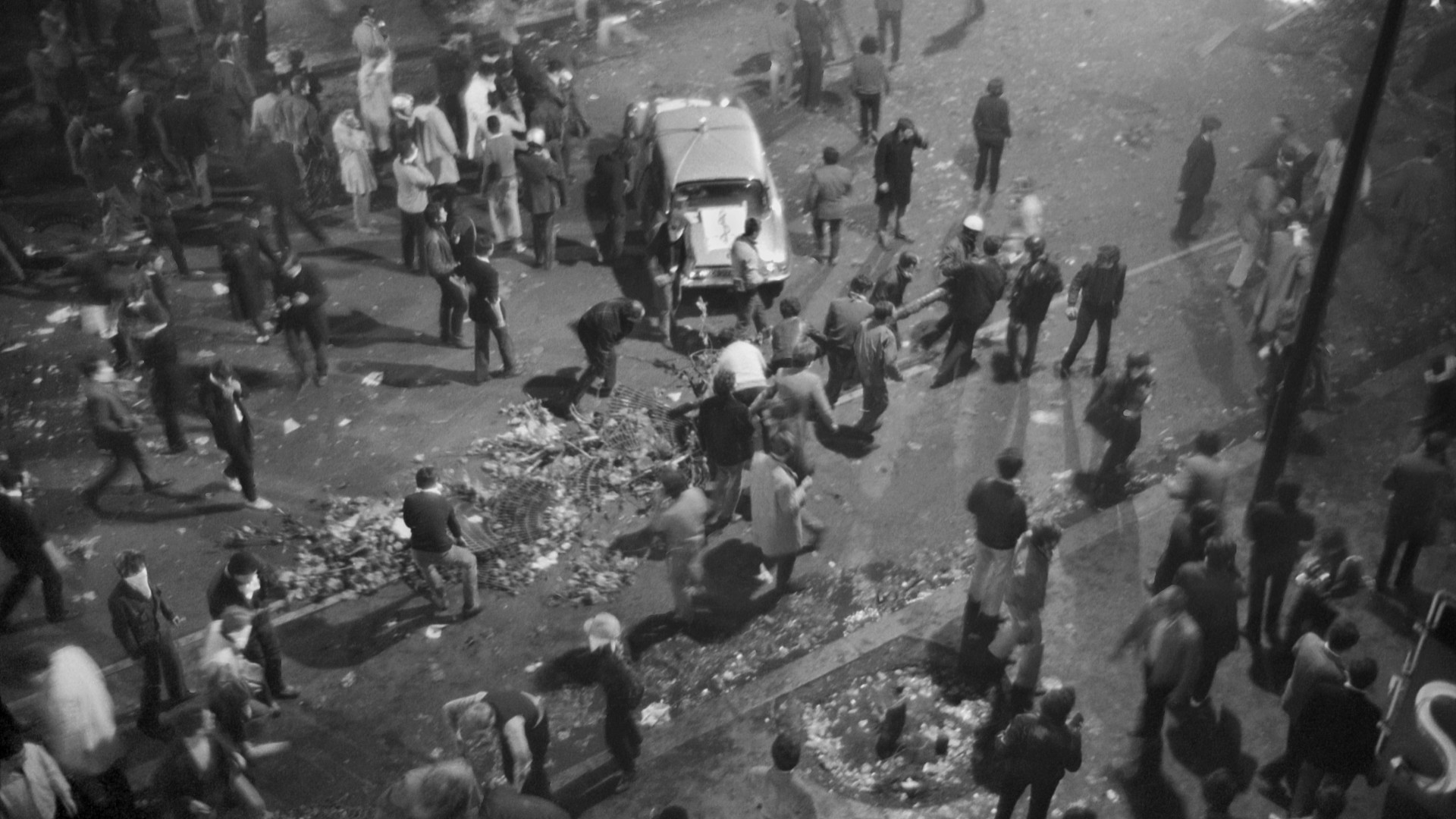10 biggest protests in history
Here are ten of history's biggest protests that saw demonstrators in their millions trying to change the world.
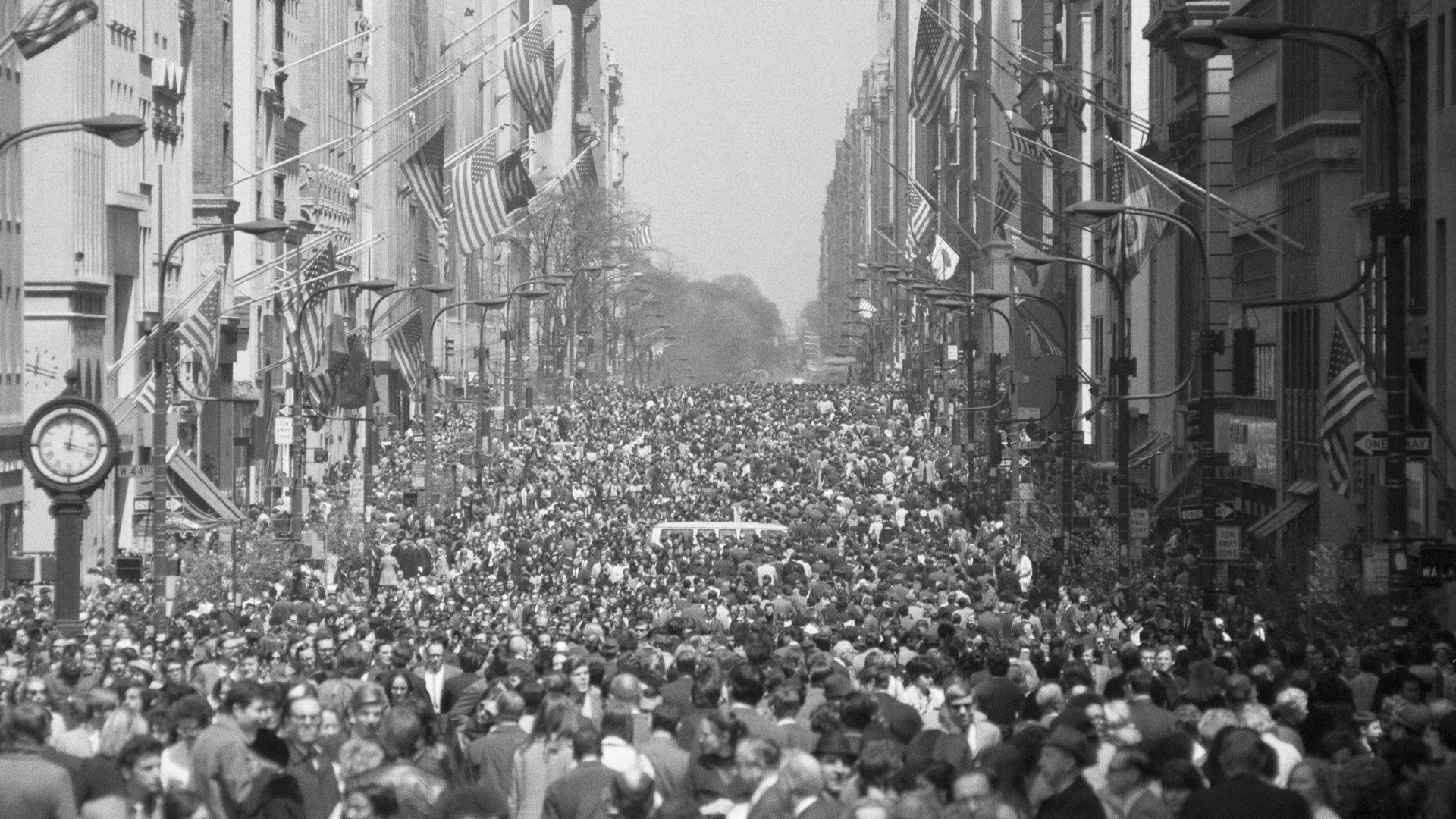
Some of the biggest protests in history have been decisive in changing unjust laws, holding governments to account and more. Some protests have attracted so many people to the streets they’ve become turning points in world history.
While many major protests don’t always achieve their aims, they leave a mark on society, often inspiring other demonstrations around the globe and across the decades.
Here are ten of the biggest protests in modern history.
Indian farmers protest (2020-2021)
In early Dec. 2021, tens of thousands of farmers in India who had been protesting against planned changes to laws around their produce agreed to go home. It brought to an end demonstrations that had seen around 250 million people take to the streets, according to the Business and Human Rights Resource Centre.
The government of Narendra Modi had been forced to climbdown after 18 months of action. The proposed laws would have relaxed rules around the sale, pricing and storage of farm produce. Farmers said it would leave them at the mercy of big businesses. With around half the population involved in agriculture, the possible impact was huge.
By Sept. 2020, farm workers started to block roads and railways in the states of Punjab and Haryana. Some farmers began burning their fields while hunger strikes by protest leaders followed, the New York Times reported. Protesters then marched to Delhi where authorities tried to turn them back. By then, the protest had widespread support and in Nov. 2020, over 250 million workers went on strike in support of the farmers.
In Jan. 2021, India’s Supreme Court put the laws on hold, according to The Guardian, but protesters refused to compromise. By now, thousands were risking extremes of temperature as well as Covid as they camped around Delhi.
Get the world’s most fascinating discoveries delivered straight to your inbox.
Modi axed the laws in Nov. 2021 with protesters standing down weeks later. But they’ve said future talks with the government could yet see them return to the streets, according to the Indian Express.
George Floyd and Black Lives Matter (2020)
In the middle of the coronavirus pandemic, the murder of one man led to a mass protest that quickly spread around the world. The killing of George Floyd in Minneapolis, on May 25, 2020, caused a wave of anger that soon saw mass demonstrations involving millions of people.
George Floyd died after police officer Derek Chauvin knelt on his neck for over nine minutes during an arrest. A video of him begging for help and saying he couldn’t breathe went viral. Within 48 hours of his death, thousands of protesters were on the streets of American cities, lying on the floor and chanting "I can’t breathe," according to the New Yorker.
A week later, protests had been staged in 75 U.S. towns and cities. Violence broke out at some and over 4,000 people had been arrested, according to CNN. U.S. President Donald Trump said he was considering military intervention.
The protests were partly co-ordinated by the Black Lives Matter movement. They also became global, with wider issues of race and racism spurring demonstrations in cities around the world.
The demonstrations continued through June 2020 although numbers began to diminish.
Women's March (2017)
When retired lawyer, Teresa Shook, put out a Facebook call to action following the victory of Donald Trump in the 2016 Presidential race, she began a chain of events that would lead to the biggest one-day protest in U.S. history.
"We have to march" she wrote on Pantsuit Nation, a private group of Hillary Clinton supporters. The day after Trump's inauguration, over half a million people did just that in Washington D.C.
They were joined by millions more across the US. Official estimates put turn out at around 1.5% of the total population of the country. That same day, Jan. 21, 2017, "sister" marches across the world brought out hundreds of thousands in support, according to the London School of Economics.
The protest began as opposition to the new President’s attitude to women as well as his politics. Many of the demonstrators wore pink "pussy" hats, a reference to the language used by Donald Trump in a recorded conversation about women, the New York Times reported.
It expanded to encompass many causes. One placard, now in the National Museum of American History, reads "Women have equal rights, climate change is real, love is love, immigrants make America great."
The movement continued in the following years although numbers of protesters never matched those of 2017, according to the Washington Post.
Anti-Iraq War protests (2003)
On Feb. 15, 2003, millions of people marched in over 600 cities against the plans of U.S. President George W. Bush to invade Iraq, according to The Huffington Post. In Rome alone, 3 million people took part in the protest . But weeks later, the invasion of Iraq began.
President Bush had argued for months that Iraq was violating U.N. resolutions over weapons of mass destruction. Within days of an address to the U.N., in Sept. 2002, calls for action against his invasion policy began. By the end of 2002, the European Social Forum, a meeting of global justice movements, proposed a day of protest in February 2003.
A large-scale co-ordination program culminated in global protests on Feb. 15. Police in the U.K., where Prime Minister Tony Blair backed the Iraq war plans, estimated 750,000 people marched in London, according to Britain's Imperial War Museum. Over 1.5 million protested in Madrid while Dublin saw a turnout of around 80,000, according to The Guardian. In New York, around 100, 000 took part in a protest near the U.N. headquarters, the BBC reported.
The protests were largely peaceful. However, they had little impact on policy. The invasion of Iraq began on March 20, 2003.
Tiananmen Square (1989)
An unknown man, alone in front of tanks at Tiananmen Square in China, became one of the best known symbols of defiance of the 20th century. His solitary stand was a final act of a populist protest which at one point brought around a million people together to demand more freedoms in the Communist country, according to Amnesty International.
Students had led the charge. In the mid 1980s, some of those who had spent time abroad began to press for changes. That call became the central message of a huge gathering in April 1989, held on the day of the funeral of Hu Yaobang, a former top Communist official who had been sidelined after calling for reform, according to the Washington Post.
Six weeks of protests followed with the focal point at Tiananmen Square. At the end of May, martial law was imposed, according to Amnesty International. The demonstrations spread to around 400 cities. Around 300,000 troops were sent to Tiananmen Square where up to a million people had massed. On June 3, 1989, the military moved in as protestors tried to stop them. The official death toll was put at around 300 but in the immediate aftermath, leaflets circulated claiming around 3,000 people had been killed, according to National Geographic.
The Communist Party tightened its hold on the country. Three decades on, mentions of the protests are still censored in China.
The Baltic Way (1989)
On the evening of Aug. 23, 1989, millions of people formed a human chain over 400 miles long across Latvia, Lithuania and Estonia, according to NPR. The Baltic Way, as it was dubbed, was intended to be a visible but peaceful symbol of protest against the Communist regimes which ruled the countries. It was over within hours but its impact was almost immediate.
The origins of the idea have never been formally identified but support grew rapidly by word of mouth. Since the mid 1980s, populist movements against Communist rule had grown as reforms across the Soviet bloc were introduced by Mikhail Gorbachev. These groups were instrumental in organizing the call for action which took place on the 50th anniversary of the Molotov-Ribbentrop Pact which had secretly divided control of eastern Europe between Russia and Germany, according to The Holocaust Encyclopedia.
It’s estimated that around a quarter of the population of the Baltic States held hands that night to form the symbolic chain. It became the biggest demonstration in the history of the Soviet Union. Soon afterwards, the wartime pact was declared invalid while anti-Communist protests swept eastern Europe, culminating months later in the fall of the Berlin Wall. Within two years, all three Baltic States were independent nations.
People's Protest (1986)
Ferdinand Marcos had ruled the Philippines for 20 years, mostly under martial law, when he was forced from power by a People's Protest made up of dissenting military leaders and millions of citizens, according to Britannica.
On Feb. 7, 1986, Marcos had been declared winner of a presidential election he'd been forced to call, according to the New York Times. His defeat of Corazon Aquino, widow of his assassinated opponent Benigno Aquino, was immediately queried. The Catholic Church in the Philippines condemned the poll while some army officials planned a coup. Marcos arrested the leaders but other military began to defect, according to the BBC. Leading Catholic cleric, Cardinal Jaime Sin, called on people to put the result right peacefully.
Millions headed to the street known as EDSA in Metro Manila to support the defecting military. Writer Jose Dalisay later told BBC Witness that "the people came out and protected the rebel army, it was like a huge picnic."
Tanks ringed the capital but military support for Marcos disappeared. Nuns gave flowers and food to soldiers while families camped out to show their support. According to the New York Times, Marcos fled and Aquino was sworn in as president on Feb. 25, 1986.
Earth Day (1970)
Earth Day was first held in the U.S. in 1970 to channel calls for a healthier, more sustainable environment. Democrat Senator Gaylord Nelson had seen the damage of an oil spill and took recent anti war protests as a template for action.
His idea of a day of demonstrations to highlight the environment soon took off and on April 22, designated Earth Day, over 20 million people took to the streets of tens of thousands of places across the U.S., according to the Library of Congress.
Widespread support across the political spectrum boosted the first Earth Day and so many representatives took part, Congress had to close. Mass rallies, mostly peaceful, took place while the gas mask and a flower were chosen as symbols.
The protests led to almost immediate change in legislation with the acts to ensure clean air and water passed by the end of the year alongside laws protecting endangered species, according to the official Earth Day site. Earth Day proved so popular, it's been run every year since.
France in May (1968)
The protests that brought France to a standstill in May 1968 became a turning point for the country. Richard Vinen, professor of history at King's College London, claims that the goals of the protest are hard to define. "For a couple of weeks, the country seemed to hover on the edge of some kind of revolution, although no one really knew what kind," Vinen wrote in his book "The Long ’68" (Pelican, 2019).
Small-scale student protests on a range of issues including opposition to the Vietnam War and a ban on couples sharing beds at the Nanterre campus of the University of Paris led to it being closed down in early May 1968. The demonstrations moved to the Sorbonne where riot police intervened.
A march of around 40,000 people on May 10 turned into a night of violence as protesters ripped up cobblestones and police fired teargas, according to Viewpoint Magazine. Public sympathy swung towards the students.
Unions across the country began to organize wildcat strikes. At one point, around ten million workers were demonstrating for a wide range of causes from better wages to increased liberalism. President Charles de Gaulle briefly left the country before returning to give a radio address on May 30. His supporters, numbered at around a million by some, marched through Paris.
The student protests began to weaken and elections on June 23 strengthened de Gaulle’s hold on power.
The Salt March (1930)
The Salt March became focused on the protest of one man, Mohandas Gandhi, but it was a campaign of non violent disobedience designed to offer thousands the chance to defy British rule in India.
On March 12, 1930, just weeks after he had been part of a group declaring self rule in India, Gandhi began a march from his home at Sabarmati Ashram to Dandi, on the coast of the Arabian Sea. He intended to arrive on April 6th and make salt, an activity that was illegal for Indians under British rule, according to The British Library.
The British monopoly on salt brought it a lot of revenue but had a major impact on the poor. Gandhi began his march with 78 others but the numbers soon swelled. By the time they reached Dandi, at least 50,000 were present as Gandhi boiled soil in seawater to produce salt, according to The Guardian. His actions were copied and although official numbers weren’t kept, most estimates put the number joining the disobedience by making salt well into the millions. At least 60,000 had been arrested by the end of April. By then, authorities were using violence to suppress protests.
Gandhi was detained on May 5 ahead of a planned raid on a salt works, according to Oxford Reference. He would remain in prison until January 1931. By then, his campaign had gained global prominence. On his release, he was invited to talks with the British as an equal and the long road to independence had begun.
Additional resources
For more information regarding how popular protests have helped change the world, check out "The Protests that changed the course of history." Richard Vinen's The Long '68 (Pelican, 2019) explores the many protests that occurred during this year and helps contextualize them alongside other political and social issues. Matthew Wills 2020 article for Jstor Daily, The First Earth Day delves deeper into the background and impact of Earth Day.
Bibliography
- Emily Schmall, "Indian Farmers Protests Spread in Challenge to Modi", The New York Times, Dec 4 2020
- Hannah Ellis-Petersen, "Indian Court Suspends New Agriculture Laws After Mass Protests", The Guardian, 12 Jan 2021
- "Farm laws repeal Highlights: Samyukt Kisan Morcha to decide future course of action during meet on weekend", Indian Express, 20 Nov 2021
- Jelani Cobb, "The Death of George Floyd, In Context", The New Yorker, May 27 2020
- Joe Sutton, "Around 4,000 People Have Been Arrested in the US Since George Floyd's Death", CNN, June 1 2020
- Alexander Cirone, "Women's March on London: The Importance of Sister Marches", LSE, Feb 10th 2017
- Paul Blumenthal, "The Largest Protest Ever Was 15 Years Ago", Huffington Post, March 17 2018
- Patrick Barkham, "The Iraq War 10 Years On: Mass Protest that Defined a Generation", The Guardian, 15 Feb 2013
- "New Yorkers Join Anti-War Protests" BBC, 15th Feb 2003
- "1989 Tiananmen Square Protests", Amnesty international, 5th Jan 2022
- Erin Blakemore, "How A Peaceful Protest at Tiananmen Square Turned Into A Massacre", National Geographic, June 4 2020
- Seth Dyans, "Marcos Declares He'll Call Vote Early Next Year", The New York Times, 4th Nov 1985
- Richard Vinen "The Long ’68" (Pelican, 2019)
- Sergio Bologna and Giairo Daghini, "May 68 in France" Viewpoint Magazine, June 21, 2018
- "Gandhi's March to the Sea" The Guardian, 13th March 1930
June Woolerton is a freelance writer and journalist. She has written for numerous outlets and published an Ebook, All Manner of Murder, in 2017.


